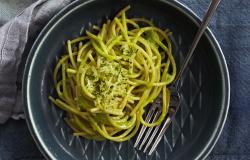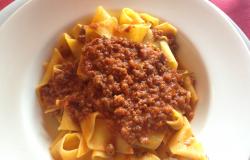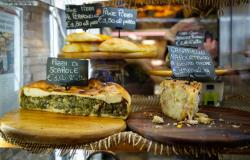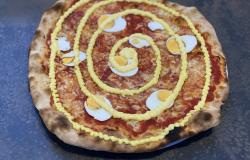Tagliatelle ‘del contadino’
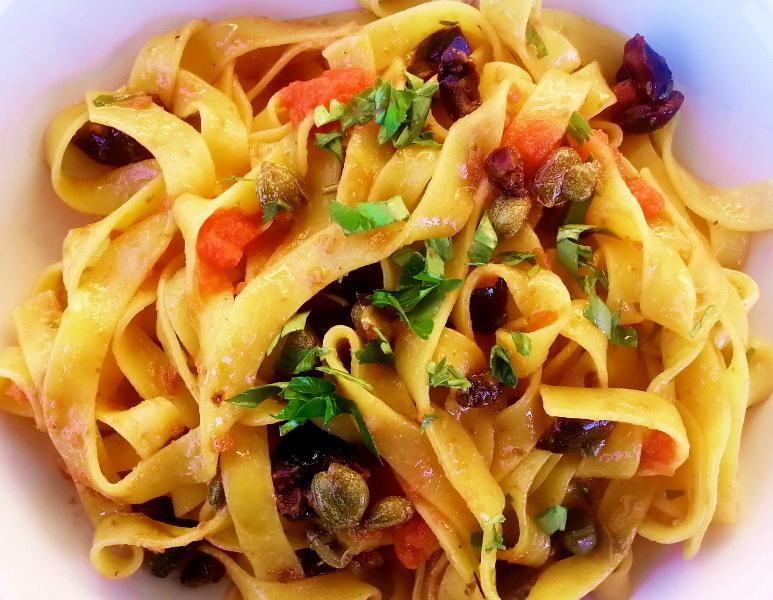
by Amy Gulick, The Bittersweet Gourmet
The cucina povera has been described as the art of cooking combined with the art of getting along (or l’arte d’arrangiarsi). To feed a family of farmers and laborers, Italian peasants of times past relied on so-called ‘poor’ ingredients to craft satisfying and flavorful dishes, many of which have evolved into Italy’s best known and beloved recipes. In Tuscany, for instance, this marriage of economy and ingenuity lives on in a variety of stale bread-based soups and salads, like panzanella, ribolitta, and pappa al pomodoro; as well as a host of dishes made from animals parts today generally considered unusable, if not outright repugnant to some (intestines, tongues, brains, and so on). The Tuscan specialties trippa all fiorentina and crostini di fegatini, together with salumi products like blood sausage and head cheese, all derive from an inherent philosophy of never wasting any edible part of a slaughtered animal—a luxury no peasant could afford.
Sauces and condiments play a big part in the cucina povera. When used to dress large batches of pasta, rice, or polenta, a punchy sauce has obvious advantages over one that’s delicate and mild, thus many sauce recipes call for everyday ingredients that, when rightly employed, deliver maximum flavor despite the somewhat meager quantities used. Basics such as vinegar, garlic, onion, herbs, anchovies, and cured meats figure frequently in these recipes. The recipe featured here for tagliatelle del contadino (contadino = peasant, farmer) is a textbook example of how even the humblest pantry items can be transformed into an extraordinarily tasty meal—arguably the definitive hallmark of this tradition. It’s taken from a one-shot publication titled Ritorno a Latera: Antichi Sapori, Lontani Aromi (1985), a collection of recipes as related by the women of Latera, a village in the Mugello region of northeast Tuscany. The recipe is for four portions.
Set a large pot of salted water to boil. Heat the oil and butter in a saucepan big enough to contain the sauce and all of the pasta. Add the peeled garlic, swirling it around to flavor the fats (but don’t let it brown). Add the anchovy fillets, encouraging them to dissolve into the oil by gently pressing them. After a few minutes add the olives, capers, and tomato and combine well. Remove the garlic at this point, or leave it to cook in the sauce a bit more. Meanwhile cook the pasta al dente (about 3-4 minutes; check the package indications, and shave off one full minute for true al dente). Just when the pasta is ready, add the chopped parsley and some fresh ground black pepper to the sauce and blend. Now taste and correct for salt (it might not need salting). Transfer the pasta using a pasta ladle (do not use a colander) to the sauce pan, combine well and serve. Top with some grated aged parmesan or pecorino romano cheese if you like, though technically speaking the addition of cheese would not be in keeping with this recipe’s povera roots. Enjoy!
